

Suunto Blog
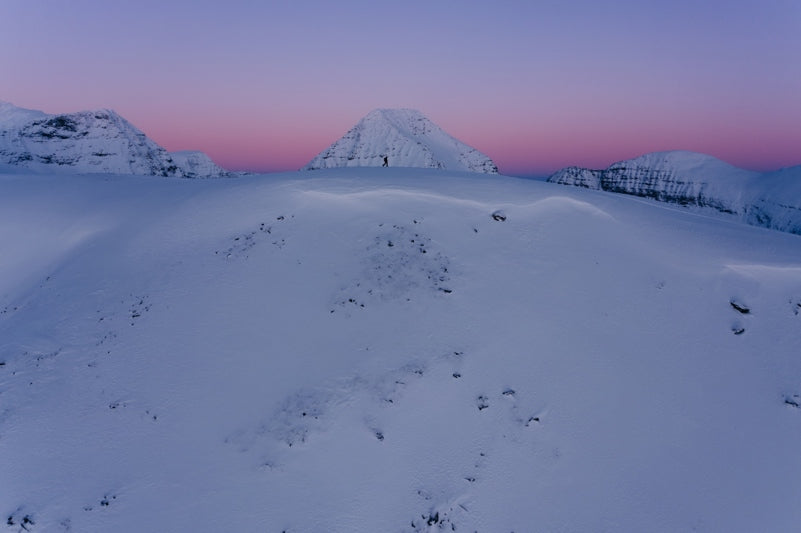
Calling winter sports fans: help researchers reduce avalanche fatalities
A first of its kind research project in Norway is inviting Suunto users to help them gain insights into how we make decisions in avalanche terrain, and what we can do to reduce avalanche accidents.
The Center for Avalanche Research and Education (CARE) at UiT the Arctic University of Norway wishes to follow 10 000 winter sports fans for 10 years to examine how we make decisions in avalanche terrain, and how we can all be safer.
To join the CAREpanel and help with this important, and first of its kind longitudinal study, you must be involved in a winter sport like skiing, snowboarding, ice-climbing, snowmobiling, hunting and so on.
Photo by Audun Hetland
How to contribute
You can contribute by joining the longitudinal study at www.carepanel.no and also by sharing your activity data with the avalanche researchers at CARE. To send your activity data to the researchers, go to the activity in Suunto app, tap the three dots on top right and select 'Export GPX workout'.
Why it’s important
Nine out of 10 fatal avalanche accidents are triggered by the victim or someone in their party. According to EAWS, the European Avalanche Warning Service, there were 130 avalanche related fatalities in Europe alone in 2020-2021. By understanding and improving decision making CARE aims to save lives.
Normal short term studies do not provide much in the way of insights into human factors and their impact in triggering avalanches. By following such a large number of people over time the CAREpanel research project will reveal how education or experience impact people’s perception of risk and their following decisions.
Photo by Audun Hetland
What’s involved
The carepanel consists of an introductory survey and a yearly survey. The surveys take about 15 minutes to complete. The CARE panelist will also be asked to join a GPS survey. If you share your GPS data you will get an offer to answer a few questions about the tour in avalanche terrain.
The researchers will run the GPS track through a terrain model and compare it with the current avalanche conditions from the warning service varsom.no. This will let them create a rough estimation of exposure risk under the current conditions. In the future the researchers also aim to provide feedback to the participants based on their GPS tracks.
Some participants may also be invited to join additional short studies. These are optional.
How to sign up
To become a CARE paneilist, first read important information for participants. Then complete the CARE panel recruitment survey.
Lead image: Jaakko Posti / Arctic Lines
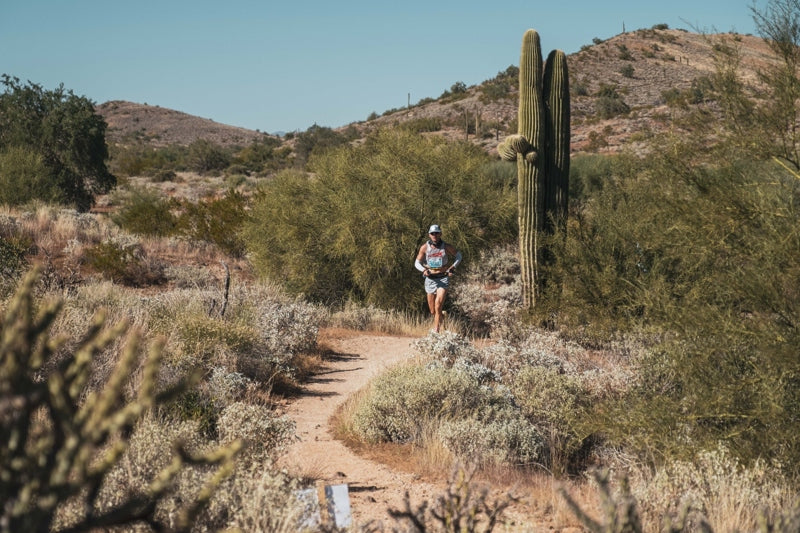
The importance of diversity in the outdoors
Suunto athlete, ultra-runner and diversity champion Ryan Montgomery is set on waking up the outdoor scene to its ongoing failure to be an accessible and welcoming place to people from all walks of life and ethnic backgrounds. It’s not going to change by itself; only with awareness, validation and deliberate action can it be reversed. Read on for Ryan’s sage advice on diversity and how we can all contribute to a more open minded, welcoming outdoors.
Ryan having a blast at the Javelina-Jundred 100-miler in Arizona.
By Ryan Montgomery
We all love being in the outdoors—with its multi-colored trees and endless plant and animal species—all thriving in uniquely different yet interconnected ecosystems. The existence of these different species and ecosystems tells us that the outdoors is inherently diverse—essentially diverse. I believe we can all agree that nature’s ecosystems thrive because of its inter-dependences across diverse plants, animals, and climates.
The outdoors teaches us that diversity is necessary for survival—to thrive. However, when I look at the people who are most often outdoors and adventuring in nature, they seem to be the least diverse and more binary compared to nature’s diversity standards, as mentioned above.
The outdoor diversity problem
For outdoor enthusiasts and adventurers, the outdoors provides a sense of belonging. We feel connected to the tree, the mountains. Nature is an integral part of all human experience, but a major gap today is that diverse communities across the world do not feel included in the outdoor spaces, let alone having access to these spaces.
In the United Kingdom, for example, racial minorities represent only about 1 % of visitors to national parks. In the United States, while people of color make up 40 % of the nation’s population, 70 % of visitors of National Parks and Forests are white, according to the National Health Foundation. Based on the past treatment and lack of inclusion of people of color (i.e. slavery), it is no wonder why people of color perhaps do not feel safe to travel outdoors, let alone be by themselves outdoors. LGBTQ communities have gathered in cities, farther away from the outdoors, to escape prejudices and to find community. Also, for women, the outdoors is often perceived (and unfortunately is) as a place where men can take advantage of them.
It makes sense why our outdoor spaces have become increasingly homogenous given our history and systemic problems in the past and present.
Ryan and his partner connect before the race kicks off.
Focusing on diversity - what can we do about it?
When I spoke to environmental US-based LGBTQ advocate Pattie Gonia about the importance of diversity, they say that “humanity is an ecosystem, and we need to support each other if we want it to survive.” And that’s all people—people of color, women, people with disabilities, and more. Until we can help marginalized communities realize that the outdoors is for them—and that it’s accessible too—all of humanity’s ecosystem cannot truly embrace what the outdoors has to offer.
Reframing what it means to be in the outdoors
One key to inclusive in the outdoors is to reframe what it means to be in outdoors and what it means to experience it. Oftentimes, the ‘outdoors’ is a man climbing a mountain, but that is a very narrow perspective. Pattie said that we can help others “redefine what outdoor experiences are, because we know we can’t get away all the time to be surrounded by a mountainous landscape. We can see so much beauty simply from the birds outside the window,” for example, or even in the small grass park within a city. Outdoors experiences can be had everywhere—not only in national parks, which are often 2- to 5-hour car or train rides from metropolitan areas where diverse communities typically reside.
Pattie Gonia and Ryan celebrate at the Javelina-Jundred 100-miler.
Show me the money
Money is a major concern for diverse communities to get in the outdoors, too.
Having the proper attire for snow or mountain climate, to simply having a vehicle that can get you into the forest or mountains, are barriers for many people of color (and others) to getting into mountain sports. We can support diverse communities by contributing to non-profit and programs that explicitly help diverse communities get outdoors. Some of my favorite organizations doing this work are Brave Trails, Harlem Run, and the following organizations on this website.
Celebrating diversity on the trail
As a queer, gay trail runner and outdoor lover, I have gained many micro experiences overtime that have helped me realized that the outdoors are for me and that there are other people like me out on the trails. That realization was a really empowering, life-changing moment. These experiences can easily be seen in my recent race, the Javelina Jundred 100-miler in Arizona, USA. The race is all about celebrating diversity and dressing up in costumes to express yourself however you want. I ran the race in a female-presenting crop top with rainbow tattoos on my arm. I felt fun, free, and excited. This type of expression at a race helped me, most likely mentally, in my performance because I was able to cross the finish line in 2nd place with a leg-crushing time of 13 hours 33 minutes. I held a rainbow Pride flag at the finish line next to my boyfriend. My performance earned a Golden Ticket to compete in the elite field at the US-based Western States Endurance Run in June 2022.
It’s clear: Inclusive outdoors experiences help diverse people show up as their best authentic selves in outdoor places and in sport.
It is my hope that we can provide that same inclusive, safe experiences to our diverse communities outside so that they too can experience the same love and belonging that you and I feel in the outdoors.
All images: Nick Danielson
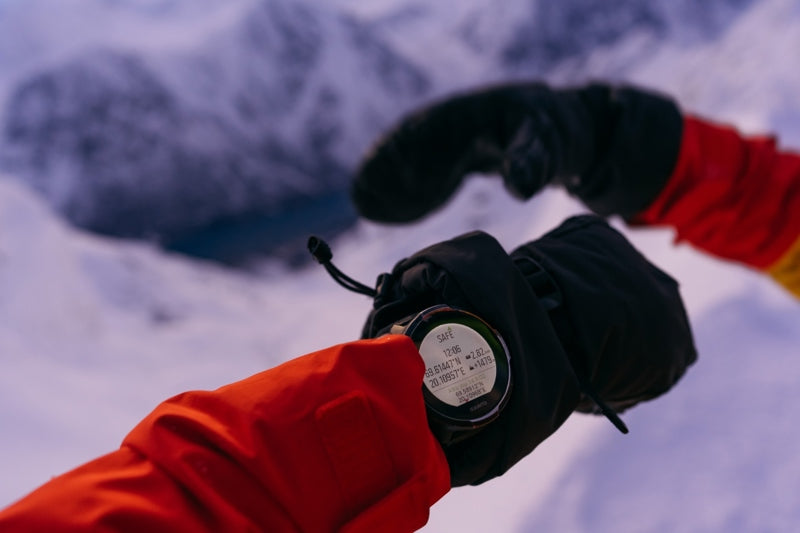
6 tips for mountain navigation
Suunto athlete and intrepid Finnish freerider Antti Autti is bracing himself for days of bone chilling temperatures as he searches for snowboarding lines in mountains above the Arctic Circle.
Season two of his Arctic Lines project is underway. The goal is to ride 30 unique, unridden or iconic lines in the frozen wilds of northern Finland, Sweden and Norway. Getting to each line is no walk in the park. He and his crew must contend with long approaches, minus temperatures, the poor visibility of the Arctic’s polar night, difficult to predict snow conditions, blizzards and obstacles.
In this article, Antti guides us through how he breaks down each trip and how he navigates to each line and back.
Watch each episode of Arctic Lines as it drops here!
Have a plan
This sounds obvious, but the importance of having a thought-through and agreed upon plan can’t be overstated. Having a plan b is also important. Make sure each person in your group knows the plan and has agreed to it. To achieve this, Antti creates routes in Suunto app and shares them with his crew for feedback. If everyone is happy, he then creates GPX files and syncs them with their Suunto 9 Peak watches.
Click here for Antti’s 8 planning steps!
Start cool
You reach the road end and get out of your toasty warm car and into the biting cold air. Don’t make the mistake of piling too many layers on too soon. It’s better to start a little cold and then warm up. Otherwise you’ll have to stop after 20 minutes to remove layers.
Let your watch guide you
“It’s really helpful to have the route planned in advance and to follow it on our watches,” Antti says. “When I’m at home and draw the route in Suunto app I can’t see all the obstacles we’ll encounter on the ground. But following the route with my watch means I can go off route by 100 m to avoid an obstacle and it will guide me back. It’s a huge help.”
Should you decide to change your plans and follow a predefined plan B, with your Suunto 9 you can also change the route you navigate during an activity. Just long press the middle button to enter the 'options' and the 'navigation' menu: there you can select the new route you want to follow. And if you do wander further away from your route, you can always zoom out on the navigation view. Simply long press the middle button on a navigation screen and zoom out – or in – with the buttons to see your position related to your planned route.
Read here how to navigate with a Suunto 9.
Break it down
Antti breaks down each trip into five sections: below the treeline, observation, the traverse, the ride and, lastly, the return. Each section has a different focus and tasks.
Below the treeline: Important to conserve energy and follow the easiest way in as possible. This is why it’s important to start on time so there’s no rush to get in.
Observation: At the treeline, Antti and his crew have a 30 to 45 minute break to observe and assess the situation. “At the treeline we can see if the route we made in Suunto app is going to work,” Antti says. “This is when we make critical decisions about which route to take to get to the line. The shortest way might be more exposed. The longer way might be safer, but use more energy. This is why we take our time here to make a good decision because after that it’s full on.”
The traverse: Antti tries to follow a route that affords him protection from snow or rock fall. Where possible he tries to stick to climbing ridgelines.
“This is when we approach the face and climb to the top of the line,” Antti says. “We need to do that quite fast and this is where we use the most energy. It’s also when we get to know how the snow is and make a decision whether to go ahead or pull the plug.”
The ride: “If I plan a lot ahead, then the descent is super nice because all I need to do is ride really well,” Antti says. “If the conditions are good, it’s all fun, but if not it can be really tricky. It’s always hard to know how the ride will be. If you have a big face with multiple options, then you have to be able to change your original plan.”
The return: After they’ve ridden the line he and his crew are usually quite pumped and excited. While this is great, if they get carried away by it this is when mistakes can be made. “When we get excited after the line it’s always good to stop and regroup a little,” Antti says. “When you’re playing in the mountains, it’s so important to regularly regroup and refocus.”
Even if you are not following a preplanned route, the breadcrumb trail on your Suunto is super useful during the return: it will help you get back on your skintrack and the trailhead where you started. Read about Suunto's Find Back feature here.
Be prepared to change plan
Being exposed to cold in the mountains is serious business. It’s all about managing time and energy, and responding to unforeseen challenges. Stubbornly sticking to a plan can be dangerous. Antti advises to keep an open mind, and to check in regularly with your group to see how you are all doing and whether any course correction is required.
Keeping tabs on sunrise and sunset times is especially important in the mountains: learn how to use sunrise and sunset alarms in your watch here.
Have a safety back up
Antti uses the SuuntoPlus Safe - My Location feature on his watch. There is always a risk that something goes wrong and they need to call for help. This feature for Suunto 9 watches provides information that they can give to a rescue team. It provides location info and the direct distance and altitude from the starting place.
Antti also takes his smartphone with him as a backup in case he needs to reassess the route.
Watch Arctic Lines here!
All images by Jaakko Posti
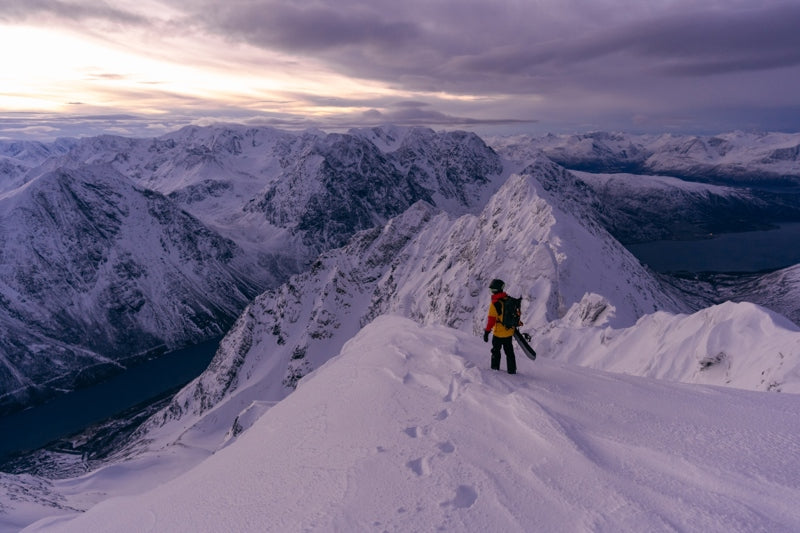
8 steps for planning trips in the mountains
Over the last few months Antti Autti has been doing one of his favorite things: pouring over maps of northern Norway, Sweden and Finland looking for contours that suggest there’s an incredible line there waiting for him to freeride.
After identifying a number of candidates, he developed a plan for the second season of his Arctic Lines project; the goal of which is to hike and ride 30 iconic backcountry lines north of the Arctic Circle. Each trip is carefully measured against the two guiding values of the project: safety and sustainability.
Antti will soon set off into the frigid Nordic north to try to get in a trip or two before the polar night descends, and the sun no longer rises above the horizon. We caught up with him just before he left and asked him to take us through his planning process and how he keeps he and his team safe while also trying to minimize the project’s carbon footprint.
Watch each episode of Arctic Lines as it drops here!
Route planning on the go with Suunto app.
Step 1: Study the maps
This is where it all begins. Antti uses Suunto app and FATMAP to study an area, become familiar with the terrain and to look for features that suggest there’s a line worth riding. Using 3D maps on Suunto app, he tries to find what might be aesthetically interesting or unique, and then looks at how to approach it safely, the nearest road end and town.
“I’ve been using Suunto app a lot, with the new satellite images, to get an idea of whether the line has potential or not,” Antti says. “We also use the heatmap to see how people have been moving in the area as this can help us to find the right route. Having a 3D map means we can think about what the line will look like and that’s an important part of the planning.”
Step 2: Selecting a line
“It’s a creative process,” Antti explains. “It really comes down to the feeling I get when I look at it on the map. If the line makes me curious about how it would feel to snowboard down it, then I know it might be interesting to do. It also has to have a sense of challenge. The exploration, steepness, length of tour, the lack of sunlight, lack of daylight, these are challenges you have to plan around and this makes it more interesting.”
Step 3: Getting feedback
On each trip of Arctic Lines, there’s a team of three or four who accompany Antti: a videographer, someone he rides with, and a safety person. Once Antti has selected a potential line he shares it with his team and asks for their feedback. How would we film this trip? Is it too remote? Does it look too gnarly? Would this be fun?
“We create a GPX file, based on maps in Suunto app, and send it to my crew for feedback,” Antti says. “They let me know what would be good for them.”
Learn how to import GPX files in Suunto app for iOS and for Android.
"Having a 3D map means we can think about what the line will look like and that’s an important part of the planning," Antti says.
Step 4: Evaluating snow and weather
Once Antti and his crew have decided on a line, the next step is determining what conditions they’d like to do it in.
“We have three options,” Antti says. “A stable snowpack with very good quality snow, but poor weather or, alternatively, sunny weather and an unstable snowpack or great weather and a stable snowpack. There are just a handful of days when everything is sort of perfect.”
With a stable snowpack we have the chance to try something with more risk, like a couloir. We can do that in grey weather or in a snowstorm. If we go in sunny weather, we might have a less stable snowpack, but because we can see risky pockets it’s easy to avoid them. But if the snow cover is really unstable - if there’s a chance of triggering a big avalanche - everything is off. But if we know we can avoid those locations then we can keep going. Route choice is super important.”
Step 5: Factoring in the crew
With a sense of the snow conditions, the route and the risk involved, Antti then factors in who he will be skiing with and who will be in the crew, and whether they all have the level of experience, skill and endurance fitness to pull it off.
“If we have a big mission in the interior, I can’t take a less experienced person with me,” he says. “It’s important to know everyone’s experience level, and their mental and physical condition.”
Once Antti has planned a route on Suunto app he shares it with his crew.
Step 6: Balancing safety and sustainability
These two guiding values are in tension with one another. What’s safer is often less sustainable and vice versa.
“If it’s a 30 to 50 km approach, then we have to have a super strong crew because that’s a 100 km round trip,” Antti says. “You have to be physically and mentally strong to do it. If there’s even the smallest chance one person isn’t fit for it, then we might have to use alternative options, like snowmobiles. Sustainability is hugely important, but sometimes we have to compromise for the sake of safety.”
Step 7: Deciding on Plan B
This involves considering the snow and weather conditions, the available time window, and deciding the best way in and to the top of the line. It’s smart to map out the Plan B route on Suunto app and share it with the rest of the team. “If there’s too much time pressure we might just cancel because that’s when mistakes can get made,” Antti says.
Step 8: Scout day
“To get a better idea about the situation, I don’t go straight into the line,” Antti says. “I will take my time to plan. Then we have the basic ideas, but we still have to take a look and build up the confidence by knowing the pack and understanding as much as we can.”
Check out Antti’s Arctic Lines adventures here!
All images by Jaakko Posti
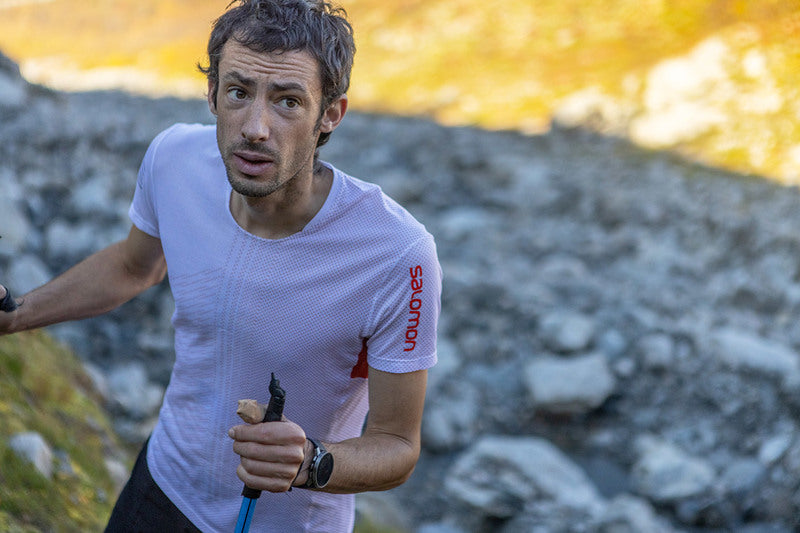
How fast can Kilian Jornet run a Vertical Kilometer?
Watch as Kilian Jornet explores epic Norwegian landscapes to find the perfect spot to break the fastest known time – or "FKT" – of a Vertical Kilometer held by Philip Gotsch. Philip's time is under 29 minutes!
Images by Matti Bernitz
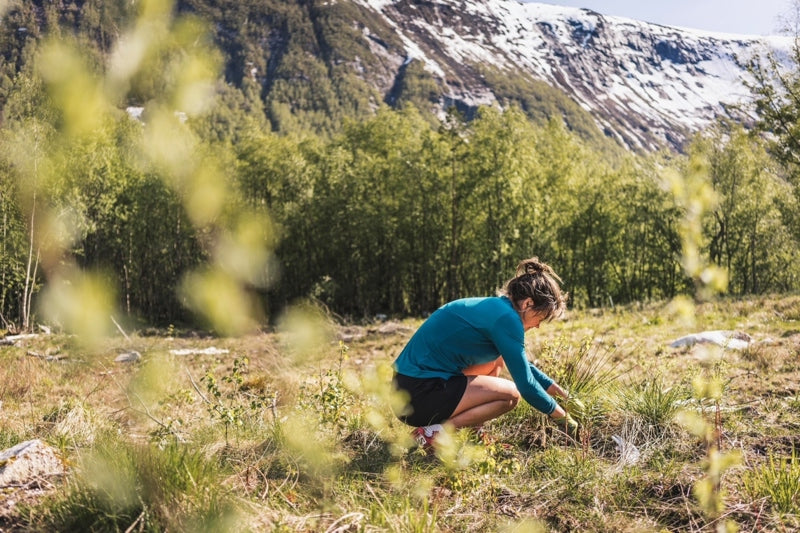
Emelie Forsberg’s principles for a sustainable lifestyle
Growing up in the wild forests of north-east Sweden, Suunto ambassador and mountain runner Emelie Forsberg formed a deep, enduring relationship with natural places and a desire to explore and protect them.
After recently giving birth to her second daughter, she has gradually returned to running and training, and aims to race again soon. Her other great passion in life is working with the earth and understanding natural systems.
The former sky running world champion, mother of two and avid gardener is passionate about sustainable living and minimizes her household’s environmental impacts.
“The most important thing in life is to live sustainably in all ways, in relation to myself and the goals I have, with nature, and my children,” Emelie says. “I think everything is connected. Of course the biggest concern is to take care of the planet we live on.”
With sustainability and climate change urgent topics, with grave implications for humanity, we caught up with Emelie to talk about her approach to it. Read below for her principles.
Learn about Suunto's approach to sustainability
Emelie collecting berries for the freezer to last over winter.
Follow the four ‘R’s
Emelie first learned about these 30 years ago when she was in kindergarten. Now, they are more important than ever.
The four ‘R’s are: reuse, reduce, refuse and recycle.
With 7.5 billion people on the planet and growing we need to be careful how we manage the planet’s resources. Every year Earth Overshoot Day - which marks the date when humanity’s demand for ecological resources and services in a given year exceeds what the planet can regenerate in that year - arrives earlier and earlier. In 2021, it arrived on July 29. Reusing, reducing, refusing and recycling are essential components if we are to preserve, even restore, our planet’s natural systems.
Reuse
There are so many possibilities here. For example, there are the obvious ones like taking a reusable coffee cup with you and using that on the go, or getting reusable cloth shopping bags, rather than using plastic bags. You can also reuse clothing, kitchenware and furniture by buying second hand. Glass jars, plastic containers, milk cartons and so many other household items can be repurposed and reused.
“I often think about my grandparents when it comes to reusing things because for them, and their generation in general, this was very natural,” Emelie says. “I grew up with this principle so it feels very natural to me, and I implement this with my daughters as well.”
Repair
Ok, so we know we didn’t mention this one at the outset and that’s because it’s really just another aspect of reusing - repairing items rather than tossing them out because of damage. The less we put into landfill and reuse the better. Items like shoes, clothes, furniture, sports equipment and more can, with a little skill, be repaired. In cities around the world “upcycling” - the creative reuse of discarded items in such a way as to create a new item often of higher quality or value than the original - has become a popular activity with courses showing people how to approach it. Repairing can be fun!
Reduce
“In general, I try to reduce my impact by reducing unnecessary gear, clothes and other material things,” Emelie says. Reducing can also mean choosing to drive and fly less, and cycling or walking more. It can also mean reducing how much meat and dairy we eat, given methane emitted by livestock is a more powerful greenhouse gas than C02. We can also reduce how much electricity we use by turning unnecessary lights off and shutting down our devices rather than leaving them running. Reducing can also mean buying your vegetables from a local market rather than plastic wrapped items from the supermarket.
Refuse
This one might seem touchy. But if you accept what the vast majority of climate and environmental scientists are saying and the impending disaster human civilization might face as a result of our impacts, then saying no to certain things is a logical and necessary next step. Many people, for example, have decided to stop flying. While others have decided to say no to taking short haul flights. We can also refuse to invest money in organisations that support the fossil fuel industry. In terms of everyday life, we can refuse to buy single use plastics, cheap plastic items, or vegetables packaged in plastic. There are many possibilities.
“Say no to meat, fruit and vegetables produced with a lot of pesticides, non-seasonal food and so on,” Emelie says. “The list can be huge if we want!”
Recycle
This one doesn’t need much explanation and is really the very least we should be doing. But we can get creative about what we recycle. Glass, metal containers, paper and plastic, obviously, plus clothing, batteries, electronic equipment and so much more.
Planting trees helps to capture carbon.
Run a low energy home
Emelie recommends choosing an electricity company based on renewable energy.
At night, turn off heating, lighting and your devices.
Use energy efficient light bulbs.
Take only short showers.
When you use the oven, take the opportunity to cook many things at once rather than heating it multiple times over the week.
Only use the dishwasher or washing machine for full loads.
Eat plant based, or as much as possible
The UN and multiple studies have found one of the best things we can do to stop climate change is adopt a plant based diet. Less livestock animals belching and farting methane the better. It also means less land use for grazing, and more space for forests to regrow. If going full plant based doesn’t work for you, then like our other ambassador Greg Hill and many people try being a weekday vegetarian - only eat meat on the weekend.
Eat seasonally
Eating seasonally and eating locally are two sides of the same coin. “Locavores”, like Emelie, choose to eat what is grown nearby, season to season, keeping to a minimum their “food miles” - how far their food has had to travel to arrive on their dinner plate. This means less resources are required to transport and store food. Ask yourself whether you really need to eat those strawberries in the middle of winter or whether you can wait until early summer and buy them from local producers?
Eat organic
Scientists have sounded the alarm about what they call the insect apocalypse - steep bug population declines because of stresses caused by humans. Sure, bugs can be annoying, but they play crucial roles in our ecosystems. Bees and other pollinators, for example, pollinate nearly 75% of the world’s plants that produce 90% of the world’s food.
Yet their numbers have been decreasing, and one of the reasons is the use of insecticides; nasty chemicals designed to eliminate insects that threaten crops. The problem is they kill much more than the targeted pest.
“So important to support farmers who don’t use pesticides,” Emelie says. “Pesticides destroy the living ecosystem.”
Grow your own food
“For me this is a way to connect to nature and realise how important it is that we take care of it,” Emelie says. “It also gives me so much respect for the products of organic small scale farms and farmers and their work. I would never ever let any veggies I grow in my own garden go to waste, and I bring this awareness into how I respect veggies I buy as well. I know the process of growing the food!”
If you do start your own garden, Emelie encourages growing flowers in and around it to help the bees!
Small caveat:It’s also important to point out that while all of these measures can help reduce our individual emissions and other environmental impacts, the challenge of climate change is too big to be solved by individuals alone. System change is required.














































































